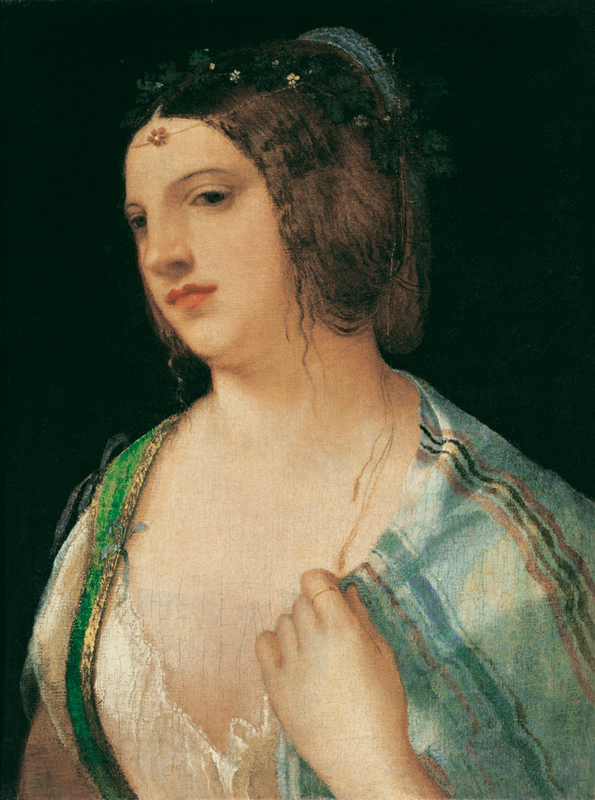Lock, Stock and Barrel: Norton Simon’s Purchase of Duveen Brothers Gallery
Behind the beguiling Portrait of a Courtesan lies one of the many fascinating tales of Norton Simon’s determination to assemble a remarkable collection of art. The esteemed Duveen Brothers Gallery, once one of the largest and most successful dealerships of the international art market, had acquired this painting in the mid-1930s as a work by Titian (Tiziano Vecellio). Then as now, scholars reveled in discussing and disputing its authorship – whether by Titian, Giorgione da Castelfranco, Rocco Marconi, Giovanni Cariani, Bonifazio Veronese, or an imitator of any of the above. And many have wavered in their steadfast attribution, as did the famed art historian Bernard Berenson, who published it in 1932 as a Titian, and then again in 1957 as a Giorgione (long after he had left the employ of the Duveen firm). Mr. Simon had first expressed an interest in the painting in the late 1950s, but by 1963, despite still some hesitation due to the question of attribution, he agreed with the then-owner of the firm, Edward Fowles, to purchase the painting over a two year period of time. And in the course of those two years, he eventually expressed interest in first an additional seven, and then another five objects in Duveen’s stock, until eventually he decided to purchase the whole of the inventory of slightly less than 800 objects, along with the Duveen gallery building itself at 18 East 79th Street, and its entire library and archive.
After a series of decorative arts and furniture auctions in the 1970s to recoup a good portion of his $4,000,000 outlay for the company, what Duveen pieces remain today in the Norton Simon collections number around 130 objects, primarily paintings, a handful of sculpture, a few porcelains, and a cape purportedly worn by Charles IV of Spain. Of this assemblage, only about two dozen pieces are regularly on permanent display, owing to their condition, the type of restoration that the paintings underwent under the Duveen conservators’ hands, or their dubious attributions. But as a whole, they offer an intriguing historical look at the infamous figure of Joseph Duveen and his eponymous firm that lived on 25 years after his death, as well as the state of the art market and art restoration in America at mid-twentieth century. And it also resonates with Mr. Simon’s shrewd style of acquiring entire floundering-but-viable businesses, and building them into thriving enterprises such as Hunts Foods, McCalls Publishing, and Canada Dry. In a step that he would repeat more than once while assembling his outstanding art collection, with his purchase of Duveen lock, stock and barrel, Norton Simon planted his foot squarely in the market for old masters and began seriously his quest to build a collection that included earlier European art, especially early Italian art. This exhibition examines his remarkable and stunning maneuver 50 years in hindsight, and reveals his uncanny strategy that ultimately brought to Pasadena important Italian works by Luini, Francia, Vincenzo Catena, Antoniazzo Romano, as well as other French, Spanish and northern works by Gerard David, Ribera, Rubens Fragonard, and Rigaud.

